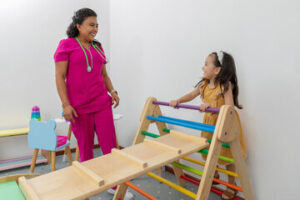Honey is a natural sweetener that also contains many vitamins, antioxidants and enzymes. Raw Wildflower Honey can help boost the immune system and ward off illnesses.

The mix of nectar from various flowers creates a multi-dimensional flavor that can differ from season to season. Add this sweet treat to your morning cup of tea or drizzle on your toast.
Honey is a rich source of antioxidants, which combat the effects of oxidative stress in the body. It also provides a natural alternative to refined sugar, which is harmful to your health. Honey contains a mixture of simple carbohydrates, fructose and glucose, as well as vitamin C and other antioxidants. Honey can be added to tea, drizzled over AIP porridge or used as a natural sweetener in baking recipes. It can also be applied topically to moisturize the skin and promote healing of minor wounds.
Wildflower Honey is made by bees that collect nectar from a variety of flowering plants, such as daisies, clover, and lavender. The resulting honey will vary in flavor and color depending on the flowers available to the bees at the time of harvest. For example, Appalachian wildflower honey has a robust flavor that comes from bees gathering nectar from a combination of wildflowers like goldenrod, blackberry bushes, and tulip poplar trees. Meanwhile, Pacific Northwest wildflower honey has a mild taste that pairs well with yogurt and roasted root vegetables.
Compared to regular processed honey, raw wildflower honey has maximum health benefits because it hasn’t undergone any heating or ultra-filtering. This means that the natural pollen, bee propolis, and minerals still remain in the honey. It also has a higher content of vitamins and minerals, including riboflavin, niacin, potassium, calcium, and magnesium.
The nutrients in raw wildflower honey boost the immune system and protect against diseases. Its anti-inflammatory properties help lower cholesterol, and its glycemic index helps manage blood sugar levels. It also contains amino acids, vitamins, and mineral components that are beneficial for the digestive tract and overall health.
The antioxidants in honey can provide relief from allergies and soothe the throat. It can also be a natural cough suppressant, and its thick consistency coats the throat, helping to reduce irritation. It is also a natural moisturizer and has anti-bacterial properties that can help heal wounds and burns. Those with specific allergies or health conditions should consult a doctor before consuming any type of honey. However, with proper use, wildflower honey can provide a delicious way to get more vitamins, minerals, and antioxidants in the diet.
It’s Good for the Heart
Wildflower Honey is a natural sweetener that doesn’t spike your blood sugar like white or brown sugar. It also contains beneficial vitamins and minerals such as vitamin B complex, which help your body produce energy and strengthen the immune system to prevent diseases.
While all types of honey can be used as a healthy alternative to processed sugar, wildflower honey offers additional benefits to your health and beauty. It is typically darker in color than other types of honey because it comes from different types of flowers and has a bolder, richer flavor. This type of honey is also a natural preservative, helping to extend the shelf life of foods when added to recipes.
Raw wildflower honey can be used as a natural remedy for digestive distress because it acts as a soothing agent, coating the lining of your stomach and oesophagus to reduce discomfort. It can also soothe a cough or sore throat when added to warm water and tea.
Due to its antibacterial properties, this type of honey is an effective treatment for mild wounds. It can also be applied as a face mask, helping to soothe dry, irritated skin and promote cell renewal.
Local wildflower honey may also relieve allergy symptoms. According to the National Center for Complementary and Alternative Medicine, honey made from the nectar of local wildflowers can make your body become more immune-tolerant to the local pollen that triggers seasonal allergies.
However, be sure to consume this honey in moderation. Despite its nutritional value, honey is still high in calories and sugar and should be eaten as part of a balanced diet. Additionally, honey should not be given to infants under the age of 1 because of the risk of botulism poisoning.
It’s Good for Your Skin
Honey is a natural skin care product that has been used for centuries. It moisturizes the skin and promotes a healthy complexion. It also contains antioxidants, which protect the skin from free radical damage and promote a smooth appearance. When choosing honey for skin care, look for raw wildflower honey, which retains more antioxidants than filtered or pasteurized honey.
In addition to its anti-inflammatory properties, honey can help soothe indigestion and boost the immune system. It can also be a natural alternative to sugar as a sweetener in recipes and teas. Raw wildflower honey is a good choice for people who are sensitive to the taste of processed honey or want a more nuanced flavor.
Wildflower honey is unique in its taste and structure, a reflection of the floral landscape of the area it comes from. Because each hive draws from a different variety of flowers, the result is a one-of-a-kind honey that tastes distinct to its region. Raw wildflower honey can be spread on toast or used as a healthier alternative to sugar in coffee and AIP recipes. It can also be used in homemade beauty products, such as face masks and scrubs.
The antioxidants in honey reduce inflammation and slow the aging process. They also support the immune system by stimulating cell growth and preventing oxidation, which is a common cause of heart disease and other health problems. Honey is also a natural preservative and can extend the shelf life of foods.
In addition to its many health benefits, wildflower honey has a wonderful flavor that can make any meal more delicious. It is great for adding a burst of sweetness to salads, or you can use it in a homemade vinaigrette. It is also a tasty addition to marinades for meat, chicken or vegetables. You can even add it to cocktails for a non-alcoholic drink with a kick. If you have a sensitivity to other types of honey, try to stick with wildflower honey as it is less likely to trigger an allergic reaction. Honey allergies can include hives, swelling, itching, or difficulty breathing in extreme cases.
It’s Good for Your Throat
Honey is a natural sweetener that provides your body with vitamins, minerals, and enzymes. It’s also a quick-digesting source of sugar, meaning you can get energy from it in short order. It may even help to strengthen the immune system and slow aging by reducing oxidative stress. Plus, it’s a great natural cough suppressant! Raw wildflower honey is a classic traditional remedy for colds, and it’s been found to be just as effective as medications such as dextromethorphan or levodropropizine. Local raw honey is also used in allergy protocols for seasonal allergies, as it can expose the body to small amounts of local pollen over time and build immunity, helping to alleviate symptoms [R].
Like other types of honey, wildflower honey is rich in antioxidants and may offer many potential health benefits when consumed in moderation. However, consuming honey can have some side effects for individuals with certain medical conditions, so always consult with your healthcare provider before incorporating it into your diet.
Wildflower honey is a unique variety of honey that contains the nectar from multiple types of wildflowers. This is a “polyfloral” type of honey, and it’s often more robust in flavor than other types of honey. Its color, flavor, and consistency can vary depending on the floral landscape of the region where the honey bee hives are located.
It’s important to find a quality brand of honey that is 100% pure, meaning it hasn’t been pasteurized or adulterated. The only way to guarantee this is to purchase honey from a trusted beekeeper or store that sells certified organic products. Look for brands that have been third party lab tested, and look for ones that support sustainable beekeeping practices.
Adding wildflower honey to your morning routine can give you a natural boost of energy to kickstart your day. You can drizzle it over your oatmeal or cereal, mix it into yoghurt, or spread it on toast. Alternatively, you could add it to hot water to enjoy as a natural tea substitute. You can even add it to your coffee for a natural flavor and energy boost.
